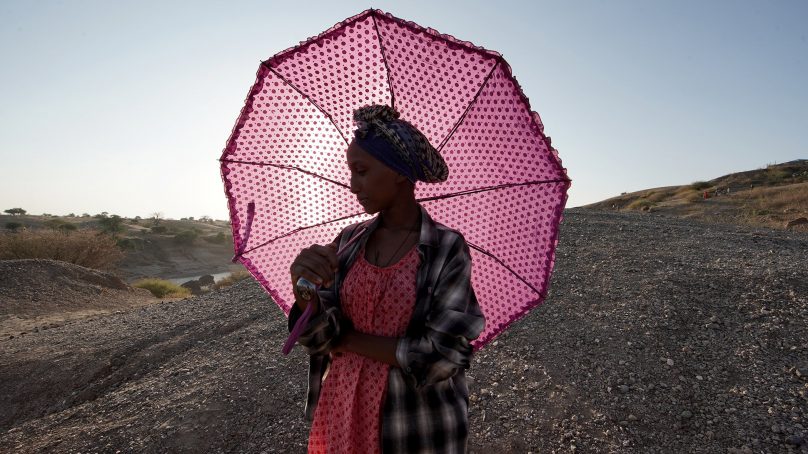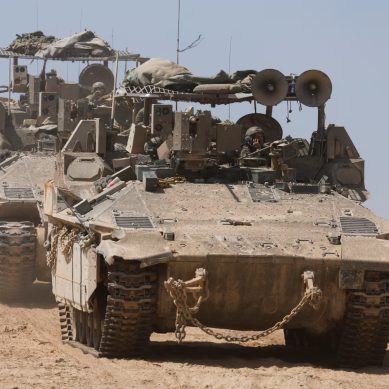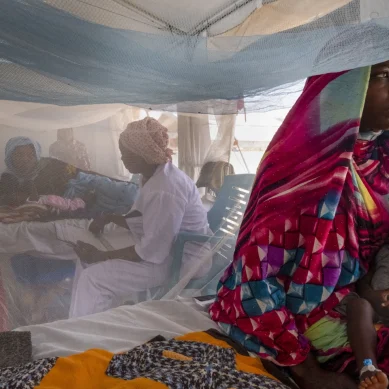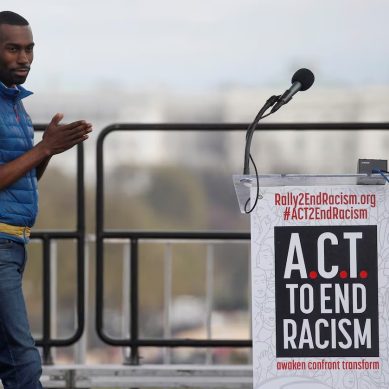
Aid agencies say they’re baffled at the contradiction between the Ethiopian government’s stated commitment to let relief into the Tigray region following its recent ceasefire, and the lack of progress on humanitarian access they’re seeing on the ground.
Ethiopian Prime Minister Abiy Ahmed declared a unilateral ceasefire last month after pulling his troops back from the Tigrayan regional capital following eight months of fighting in the county’s rugged north against the rebel Tigray Defence Forces (TDF).
Some see the ceasefire and the government army’s retreat from Mekelle as a way for Abiy to save face after military setbacks: His forces intervened in Tigray in November to oust the region’s ruling Tigray People’s Liberation Front – with the support of troops from Eritrea and the neighbouring Amhara region – but were surprised by the scale of TDF resistance.
Others insist Abiy pulled his forces back to allow humanitarian access, and to enable farmers to return to their land in a region where 400,000 people are facing famine as a result of displacement and the destruction of agricultural infrastructure due to the conflict.
When the Ethiopian army quit Mekelle on June 28, it left behind empty banks, looted shops, and frightened people. That same evening, electricity and telecommunications, which are controlled by the federal government, were also shut off. Three weeks later, the banks remain closed, cash is unavailable, and there’s a shortage of fuel, water, and food. Both road and air access to Tigray is difficult to impossible.
The Ethiopian government insists it has authorised humanitarian flights from the capital, Addis Ababa, into Mekelle and the northern Tigray town of Shire, where large numbers of displaced people have also congregated. But for now, details are scarce, and organisations are still going through various administrative hurdles and technical assessments: Not one flight carrying supplies or passengers has been able to depart from the capital.
Getting aid into Tigray was a challenge during the first months of the conflict, but then it did improve, despite the difficulties of working in a war zone. The current situation is a brutal step backwards, humanitarian officials say.
“It’s a siege,” said an aid worker based in Addis Ababa, who asked not to be named so they could speak more freely. “We’ve gone back to how things were in November.”
The numbers tell the extent of the humanitarian crisis: More than five million people are in need; over two million have been forced from their homes. There are also tens of thousands of malnourished children, while thousands of prisoners of war are still being held in Tigray.
On July 10, almost two weeks after the ceasefire was declared, a convoy of 52 World Food Programme (WFP) trucks carrying food and fuel was finally allowed to cross the eastern regional border from neighbouring Afar into Tigray. Twenty-nine of those trucks loaded with food supplies, enough to feed 60,000 people for a month, arrived in Mekelle on July 12.
“We will really need to move more food in as soon as possible because obviously we’re looking to scale up to reach 2.1 million [WFP’s target],” Claire Neville, the agency’s spokesperson in Ethiopia, told The New Humanitarian.
A church-led consortium known as the Joint Emergency Operation Programme says it is also aiming to deliver food aid to a similar number of people, and has begun operations.
Since the ceasefire, aid agencies have been able to move some staff – but not goods – in and out in cars along the road to the Afar region. However, the route is far from predictable, and lengthy negotiations at checkpoints are being reported, according to aid agency officials who requested anonymity.
Western Tigray is under the control of the government army and Amhara forces. However, the TDF has demanded the withdrawal of all non-Tigrayan troops and may launch an offensive to retake the territory contested by the Amhara region, which could give the TDF access to the Sudanese border and an independent supply corridor.
Days after the ceasefire, the main bridge across the Tekeze river that links Amhara and western Tigray to the rest of the region, was intentionally destroyed. According to the UN, the attack was allegedly carried out by Amhara regional militia, who have occupied much of western Tigray. Addis Ababa, however, accused the TDF of being behind it.
The destruction of the bridge has completely halted largescale fuel supplies, especially to northern Tigray and the major town of Shire.
“The cutting of the [Tekeze] route will have an impact on everybody,” explained George Reedings, lead crisis analyst at the International Rescue Committee. “If there’s no fuel coming in, if there are no building materials coming in, then there is no way for us to continue our activities.”
Fuel shortages, amid an almost-complete electricity blackout, are also affecting other life-saving services, including access to clean water.
“You either have pumping stations and pipes carrying water, which requires power or you put the water in trucks, and you drive it, which requires even more fuel,” said Reedings.
There is limited news of what’s happening within Tigray, as even landlines are cut off. Some organisations are reporting an ease in movements, with more areas now accessible for aid workers after the withdrawal of Ethiopian and Eritrean soldiers, who were often blocking access to territory controlled by the TDF.
Any improvement in “access” appears limited only to the ability to move more freely within TDF territory, with the humanitarian operation drawing on food supplies already warehoused in the region. However, with an estimated requirement of 40,000 tonnes of food a month, a continuous flow of new deliveries of fuel and food from outside Tigray is needed – dozens of truckloads a day.
In rural areas of Tigray, babies lack formula milk and there are severe shortages of medicines in health centres. In villages around the city of Hawzen, a former tourist destination known for its rock-hewn churches, families told The New Humanitarian before the ceasefire was declared all they had left to survive on were a few nearly empty sacks of cereal powder.
A nurse with one of the few NGOs screening children for malnutrition in the area said she was extremely worried about toddlers dying because of lack of adequate food and supplements. In one village visited by The New Humanitarian, Ethiopian soldiers had ransacked the local health centre and destroyed vaccines and other medicines for children.
“We think we will certainly run out [of food] in the coming weeks,” said Neville. “With fuel, perhaps sooner, which will really bring the humanitarian response to a standstill.”
The government has made few comments about the current aid needs facing civilians in Tigray.
In an address to parliament on July 5, Ahmed said the cessation of hostilities should allow all parties “to think”. But he said his army could easily recruit one million soldiers and return to Tigray if needed – without mentioning the unfolding humanitarian catastrophe.
Even with the decrease in fighting in some areas, the situation remains unpredictable and volatile, and aid agencies need to proceed with caution. Several aid workers have been killed since November – the latest victims being three staff members for the medical charity Médecins Sans Frontières.
They were murdered west of Mekelle a few days before the ceasefire was declared. The circumstances of the killing remain unknown, but MSF announced the suspension of its activities in central and eastern Tigray, affecting thousands of people in need of emergency medical care, including survivors of sexual violence.
“We have seen a significant improvement in terms of access [within Tigray] for the past few weeks, but that doesn’t say that it will be a key factor for us to restart what we have suspended,” said Rolland Kaya, MSF’s director general for East Africa. “For now, our focus is to shed light on what happened, establish facts, circumstances, and responsibilities.”
- The New Humanitarian report











